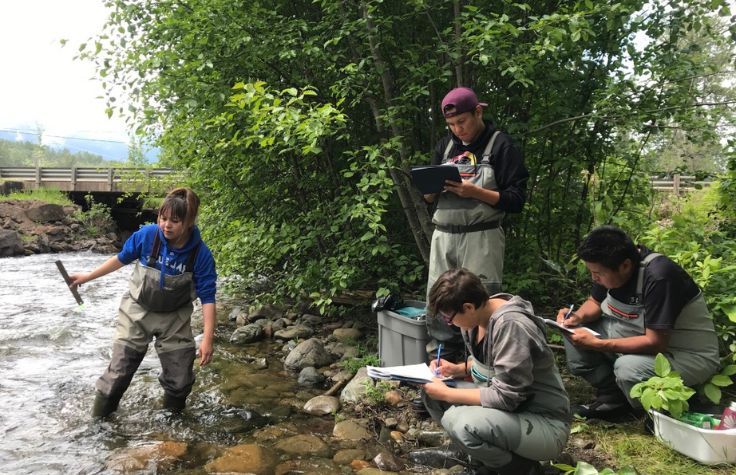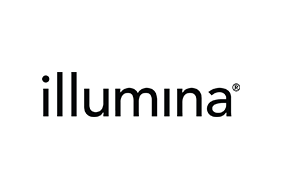A New Kind of Liquid Biopsy
Canada’s STREAM project uses genomics to advance watershed health monitoring
Published 08-30-22
Submitted by Illumina

Originally published on Illumina News Center
Rivers and streams are vital to communities everywhere, for drinking water, transportation, and leisure. But pollution, drought, and climate change are taking their toll, making watershed monitoring more important every year. That’s the urgency driving the recent Illumina philanthropic grantee Sequencing the Rivers for Environmental Assessment and Monitoring (STREAM), which samples freshwater rivers throughout Canada.
“We provide what can be thought of as clinical diagnostics for environmental health,” says Mehrdad Hajibabaei, integrative biology professor at the University of Guelph’s College of Biological Science and scientific leader at STREAM. “Our environment could be negatively impacted by human activities, and we are using genomics to diagnose these issues and aid waterway management procedures that will help treat them.”
STREAM is using a genomics approach similar to a liquid biopsy for rivers and streams throughout Canada: They collect water and sediment samples, extract bulk DNA, sequence the genomes, and use advanced bioinformatics to identify and track species of macroinvertebrates, which are animals without a spinal column that are large enough to see without a microscope.
“Let’s say somebody builds a factory or a golf course or a road—all these can potentially impact water quality downstream,” says Hajibabaei. “By checking species diversity across space and time, and comparing that to reference sites, we can identify samples impacted by these activities.”

Dr. Mehrdad Hajibabaei works with the Illumina MiSeq System in his lab at the Centre for Biodiversity Genomics, University of Guelph. | Photo: Courtesy of University of Guelph
The STREAM story
Founded in 2019, STREAM is led by the Hajibabaei Lab at the University of Guelph’s Centre for Biodiversity Genomics in collaboration with Environment and Climate Change Canada, World Wildlife Fund Canada, Living Lakes Canada, and other partnerships. Using DNA metabarcoding (short DNA sequences from signature genomic regions), the group tracks macroinvertebrates across watersheds. These organisms provide information that’s essential for investigating how climate, pollutants, and other potential dangers are impacting waterways. “These bottom-dwelling macroinvertebrate larvae are biomarkers,” says Hajibabaei. “As water quality changes, their populations change.”
Traditionally, researchers have used morphological identification—observing samples under a microscope to get species counts—which is difficult to scale. Metabarcoding used by STREAM is much faster and produces rich data for ongoing analysis. In addition, more sequencing is helping STREAM expand beyond macroinvertebrates, to investigate diatoms and other microorganisms.
Metabarcoding also provides greater flexibility over morphological approaches. “Samples are available all year long,” says Tamanna Kohi, STREAM’s field, outreach and communications coordinator. “We’re not limited to monitoring in the fall or spring.”
While these studies do not identify specific pollutants, they do detect the presence of organisms that are differentially sensitive or tolerant to environmental stressors. “Some midges indicate temperature increase,” says Hajibabaei. “If we see these changes, we can say climate change is impacting that stream. Other species can indicate dissolved oxygen levels.”

A bottom-dwelling caddisfly larvae spotted while sampling. | Photo: Courtesy of Living Lakes Canada
Community-based biomonitoring
Hajibabaei and team needed to find creative ways to collect hundreds of samples. The answer was to partner with local groups, including Indigenous communities that have strong interests in preserving their waterways. “Rather than sending people to get samples, we partnered with and trained local people,” he says. “This helped on many levels. For example, we continued to operate during COVID because we didn’t have to send people all over Canada.”
Illumina is providing $330,000 in philanthropic grants and in-kind contributions to support STREAM’s mission. “We’re excited to help support STREAM in their efforts to assess the health of the environment with the help of local and Indigenous communities,” says Illumina Chief Public Affairs Officer John Frank. “The publicly available data is vital for measuring climate impacts and equipping communities to better understand and advocate for the vitality of their ecosystem.”
So far, STREAM has targeted 15 large watersheds in Canada and has collected samples from over 600 sites with the help of nearly 100 community volunteers.
Tapping the data
Once the data has been analyzed, STREAM makes it freely available to governments, researchers, and nongovernmental organizations around the world, as well as the local communities and groups collecting the samples. Turning this data around previously took years; STREAM now does it in just two months, providing timely information to improve waterway management and meet community needs.
Democratizing the data empowers local communities with vital information. Many of them rely on fishing, and the organisms STREAM monitors are literally fish food. Understanding macroinvertebrate population levels can help people better manage them and plan accordingly. “We have the tools to help answer their questions,” says Hajibabaei. “We’re interested in knowing what they’re looking for and supporting environmental stewardship by local communities.”
STREAM data has also inspired student projects—for example, Josip Rudar, bioinformatics PhD candidate at the University of Guelph has been developing a machine learning approach to provide more useful data analysis for high-throughput sequence data. Ultimately, the researchers hope their methods will influence waterway monitoring beyond North America.
“Imagine if this could be used on a global scale,” Kohi says. “Because DNA metabarcoding is faster, more accurate, and less expensive than conventional morphological taxonomic identification, it could provide an important tool to improve broad-scale watershed management.”
Illumina technology is being used by Hajibabaei and many other scientists to solve some of the world’s most challenging and pressing issues, including climate change adaptation, biodiversity conservation, and other environmental DNA (eDNA) solutions. Learn more about how genomics is being leveraged for a healthier planet and explore how Illumina is integrating environmental sustainability into our business here.

Illumina
Illumina
Illumina is improving human health by unlocking the power of the genome. Our focus on innovation has established us as the global leader in DNA sequencing and array-based technologies, serving customers in the research, clinical, and applied markets. Our products are used for applications in the life sciences, oncology, reproductive health, agriculture, and other emerging segments.
More from Illumina

